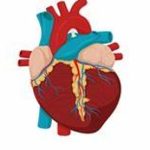The future prospects of cell
and gene therapy

Cardiovascular Disease (CVD)
Role of Cell and Gene Therapy in Cardiovascular Disease
- Ischemic Heart Disease
- Gene Therapy: Gene therapy for ischemic heart disease focuses on promoting angiogenesis, the formation of new blood vessels, to improve blood flow to the heart muscle. Genes encoding for vascular endothelial growth factor (VEGF) and fibroblast growth factor (FGF) are delivered to the heart tissue using viral vectors. Clinical trials have shown that these therapies can enhance perfusion and improve cardiac function in patients with ischemic heart disease.
- Cell Therapy: The transplantation of stem cells, such as bone marrow-derived stem cells and cardiac progenitor cells, has been investigated to repair damaged heart tissue. These cells can differentiate into cardiac cells and release paracrine factors that promote tissue repair and reduce scarring. Studies have demonstrated improvements in heart function and reduced infarct size in patients receiving cell therapy.
- Heart Failure
- Gene Therapy: For heart failure, gene therapy aims to enhance cardiac function by modifying the expression of genes involved in calcium handling and contractility. For example, SERCA2a gene therapy, which enhances calcium reuptake in cardiac cells, has shown promise in clinical trials, leading to improved heart function and reduced symptoms in heart failure patients.
- Cell Therapy: Mesenchymal stem cells (MSCs) and induced pluripotent stem cells (iPSCs) are being explored for their potential to regenerate damaged myocardium and improve cardiac function. These cells can differentiate into cardiomyocytes and secrete growth factors that support tissue repair. Early-phase clinical trials have reported improvements in left ventricular ejection fraction and quality of life in heart failure patients treated with stem cells.
- Peripheral Artery Disease (PAD)
- Gene Therapy: Gene therapy for PAD aims to promote angiogenesis in the affected limbs to restore blood flow and prevent tissue necrosis. Genes encoding angiogenic factors, such as VEGF, are delivered to the ischemic tissues to stimulate the growth of new blood vessels. Clinical trials have shown that gene therapy can improve walking distance and reduce pain in patients with PAD.
- Cell Therapy: Autologous stem cell transplantation, particularly using bone marrow-derived mononuclear cells, is being investigated to enhance angiogenesis and tissue repair in PAD. These cells can home to ischemic areas and promote vascular regeneration, leading to improved limb perfusion and reduced symptoms.
- Atherosclerosis
- Gene Editing: CRISPR-Cas9 gene editing technology is being explored to modify genes involved in lipid metabolism and inflammation, which are key contributors to atherosclerosis. By targeting genes such as PCSK9, which regulates cholesterol levels, gene editing can potentially reduce the risk of plaque formation and progression of atherosclerosis
- Gene Therapy: Delivering genes that encode anti-inflammatory cytokines or enzymes that degrade atherosclerotic plaques is another approach being studied. This strategy aims to reduce plaque burden and stabilize existing plaques, thereby lowering the risk of cardiovascular events.
- Inherited Cardiovascular Disorders
- Gene Therapy: Inherited cardiovascular disorders, such as familial hypercholesterolemia (FH) and hypertrophic cardiomyopathy (HCM), are caused by specific genetic mutations. Gene therapy can be used to correct these mutations or replace the defective genes. For example, delivering functional copies of the LDLR gene can help manage cholesterol levels in FH patients, while targeting sarcomere genes can address the underlying cause of HCM.
- RNA Interference (RNAi): RNAi therapies can silence the expression of harmful genes involved in inherited cardiovascular diseases. For instance, small interfering RNA (siRNA) targeting PCSK9 has been developed to lower LDL cholesterol levels in patients with FH, providing a novel therapeutic option.
